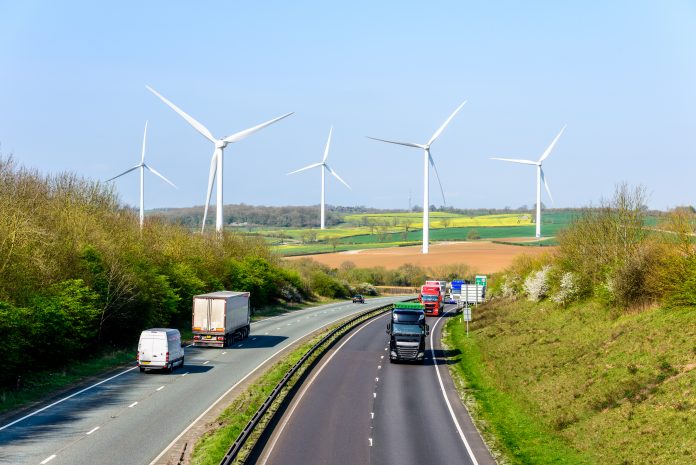Jodi Sanders, General Manager of PacWolf, explains why a sustainably managed supply chain can be beneficial
The impact of supply chains on the environment cannot be overemphasised – in fact, poorly managed supply chains in this regard can account for up to 80% of consumer company emissions.
A sustainable supply chain explained
A sustainable supply chain can only be achieved as a result of the holistic application of all environmental, economic, social, and legal concerns within the supply chain, considering factors, such as:
- Waste
- Carbon emissions
- Carbon footprints
- Labour patterns
- Health and safety practices
- Employee training and efficiency
The benefits of a sustainable supply chain
The core principle of any sustainable supply chain model is meeting and addressing the socially responsible business practices that are potentially harmful for the planet.
In addition to this, though, there are numerous other general business benefits too:
Cost reductions
Reducing the environmental impact of your organisation is often viewed as an added expense, but when this investment is focused on improving efficiency and waste reduction, you’ll find that the supply chain begins to actually save money.
Improved flow of supply
When destructive floods struck parts of Thailand in 2011, two of the biggest hard-drive manufacturers on the planet were faced with delays, shortages and increased costs due to their reliance on Thai suppliers. This just shows that a diversified supply chain can help your organisation avoid over-reliance on any single part of the supply chain.
Protecting the reputation of your business
Recognition of the challenges we face in the sustainability department is growing considerably, particularly in 2020. This means that if your supply chain is responsible for any negligence in this area, the reputation of your business could be at risk. Anything from a considerable carbon footprint, to environmentally harmful raw materials, should all be reviewed and removed over time.
How to build a sustainable supply chain
In this section, we’ll be talking about how you can begin to implement your sustainable supply chain.
Identify potentially unsustainable practices
Your first action should be to investigate the supply chain in its entirety; breaking down each part of the chain into its core elements, this way, you can begin to identify which components could be enhanced. Of course, some of these elements will be pretty obvious; for example, haulage vehicles will emit emissions, which is always an area with room to improve.
That said, there will be some elements along the way that may not be obvious on a surface level. For example, perhaps part of your supply chain relies on raw materials that have been obtained through environmentally damaging methods. Or maybe something even closer to home, in which your staff aren’t up to date with how to use your equipment in the most efficient way?
Utilise a circular supply chain
Typically, a supply chain begins with raw materials, which are then shipped to a manufacturer. The finished product will then be moved to distribution centres, and then on to the retailer or consumer. In most cases, once that product has been used to its fullest potential, it will become waste.
The adoption of a circular supply chain seeks a reduction of that waste, or even an opportunity to eliminate it entirely. To do this, a further two steps need to be tacked on to the end of the process: recycling the product, and then arranging for that product to be sent back to the manufacturer for reuse.
Fuel consumption
A reduction in fuel consumption is far more than just encouraging your drivers to avoid idle time during their journeys. The introduction of Safe & Fuel-Efficient Driving, can make a massive difference to both your emissions and costs.
That said, though, it’s just up to the drivers to modify their driving habits. Choosing to invest in sleeker vehicles, that are easier on the environment, might cost a pretty penny, to begin with, but in the long run, they will deliver significant savings.
Dead mileage
Even after you’ve taken steps to reduce fuel consumption, there’s still a big issue that needs to be addressed: return journeys.
Once your fleet has dropped off their load to the next point in the supply chain, they’ll need to return to load up again. But it’s during this process where they will burn fuel, produce emissions and use up valuable time by simply moving from A to B.
To remedy this, you should look into ways of making these “non-revenue kilometres” more productive. Perhaps you could load your fleet in such a way that they can deliver further smaller loads on their way back, or you maybe consider hiring out your fleet in order to deliver materials to other companies?
Involve your partners
While some organisations have the capacity to control the entire supply chain, most will need to engage with suppliers, customers and other third parties. Although it’s true to say that you have no direct control over the way these other operations run, there’s no reason that you can’t involve them in your quest for a more sustainable supply chain.
That’s not to say you must demand things of them, but instead you could encourage and communicate the benefits of this attitude towards sustainability. You could do this in a few different ways:
- Make sustainability a routine component of your exchanges
- Offer them more of your business
- Provide recognition and awards
- Share the expenses of sustainability enhancements











